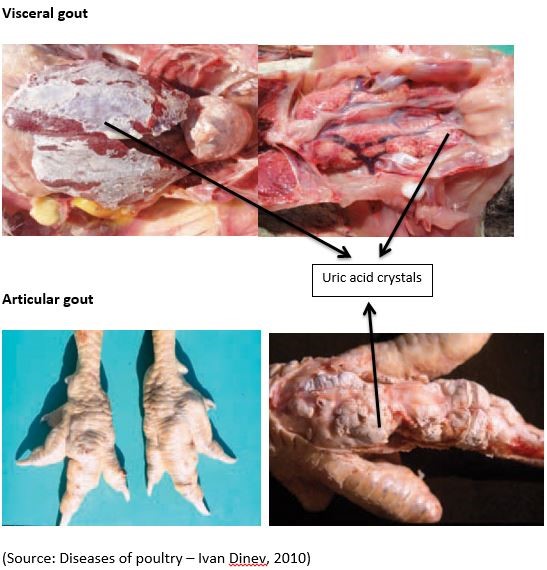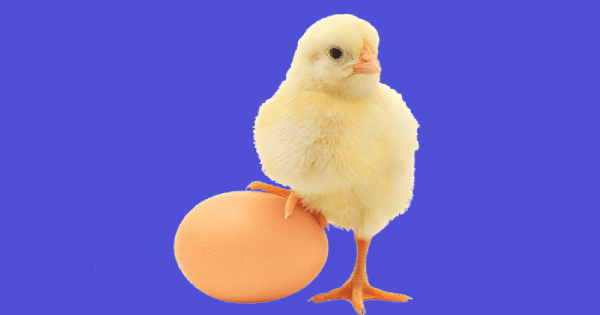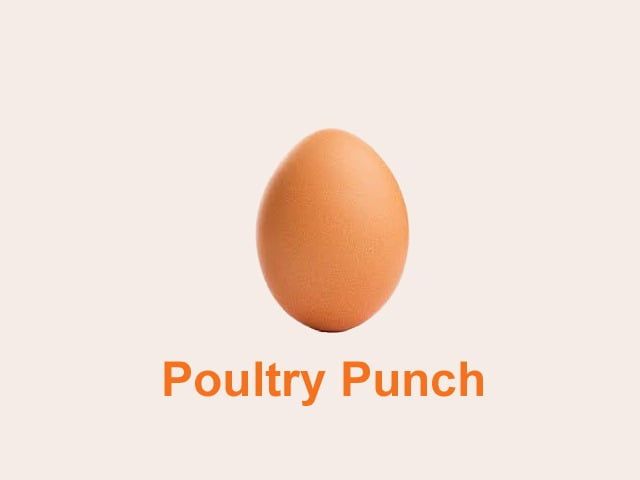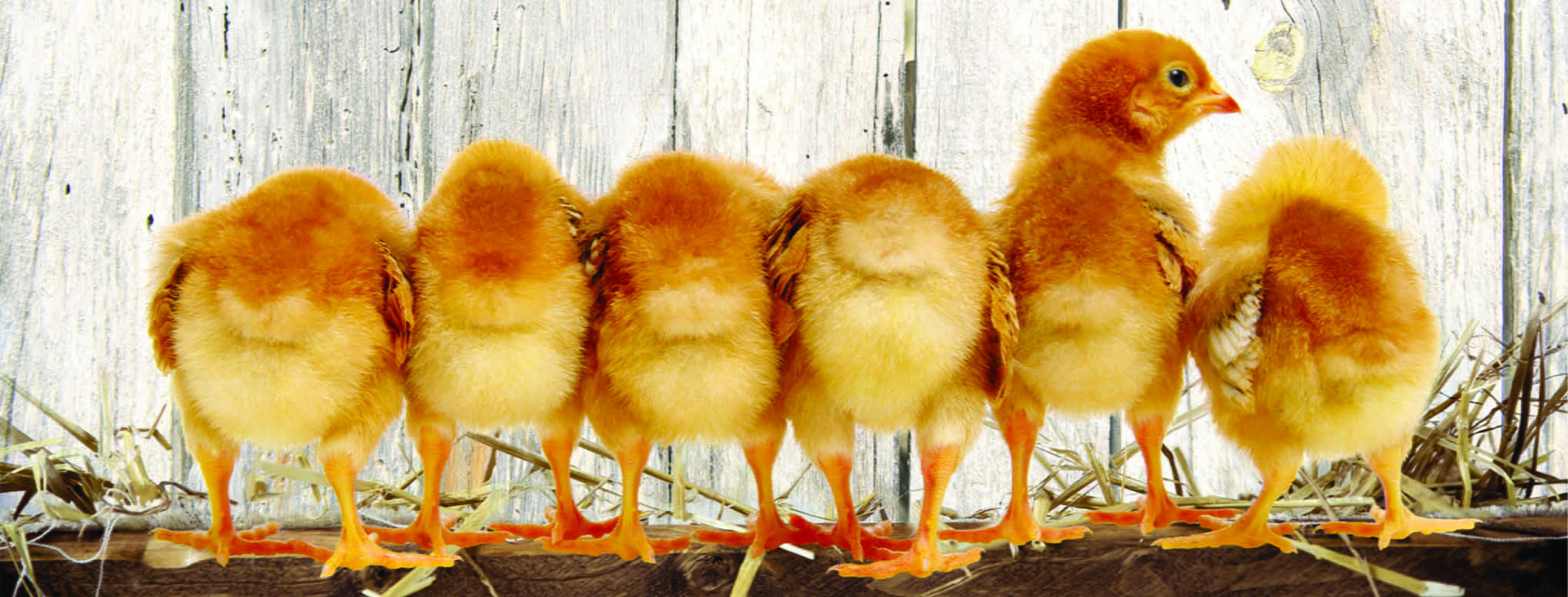Gout in poultry
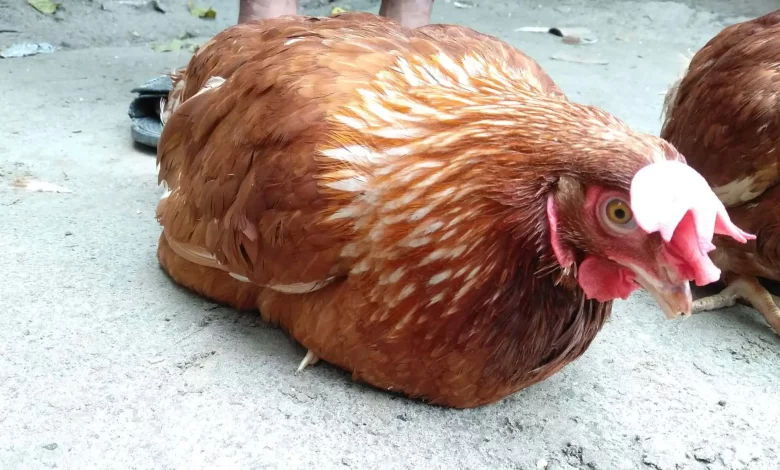
Gout in poultry
Dr. Aruna Maramulla
V. Sc., Teaching faculty, Department of Veterinary Medicine, College of Veterinary Science, Mamnoor, Warangal, Telangana state, India.
Introduction:
Gout is a common metabolic disorder that results in the abnormal accumulation of urates in poultry. Uric acid production Nitrogenous base, Purine i.e. adenine and guanine are the precursor of uric acid and the source of purines may be endogenous as a result of cell death or it may be exogenously acquired through feeds, particularly animal protein feed. Uric acid in birds is produced from the different body organs like kidneys, intestine, muscles and endothelial cells, however, mainly synthesized in the liver and excreted via kidneys [1].
Etiology: Gout in poultry may be due to infections, nutritional imbalance, toxicity or impaired renal functions that it is of multifactorial origin. As uric acid is excreted through the kidneys, 70% of kidney dysfunction is attributed to the formation of hyperuricemia and gout. Deficiency of vitamins and minerals. Viral infections causing nephropathy like avian nephritis, astrovirus and Infectious Bursal Disease are among the important causes. Injudicious use of antibiotics like gentamycin, nitrofurazone, etc., or poisoning of feed by disinfectants like cresol and phenol, can all be other causes of hyperuricemia and thus gout [2& 3].
Pathogenesis: Birds are more prone to gout because they are uricotelic, the waste product of protein metabolism is mainly in the form of uric acid. Birds lack uricase enzyme which converts uric acid into allontoin. Uric acid is water soluble, any injury or damage to a bird’s kidney, whatever cause it interferes with the elimination of uric acid, it accumulates in the blood and it leads to visceral gout. Deposition of urate crystals on the surfaces of internal organs. The crystals deposited in joints lead to articular gout.
Clinical Signs and lesions:
Based on urate deposition, gout in poultry has been classified as three types:
- Visceral gout: (urate deposits are seen on one or multiple visceral organs as well as on the peritoneal surface or thoracic wall).
- Renal gout: (Urate crystals are mainly deposited in renal parenchyma. kidneys tubules are distended with urate crystals showing brittle white staghorn calcium urate calculi.
- Articular gout: Deposition of urate crystals is observed in the synovial surface of the tarsometatarsal joint as well as in the hip joint and wing joint and incite a granulomatous reaction It is also being stated that factors like synovial pH, water and electrolytes level or some other components in the synovium such as proteoglycans and collagen may affect the solubility of uric acid in the joint [5].
Gross lesions:
Articular gout is characterized by tophi, the white chalky crystals deposited around joints, particularly the feet region, where the joints are enlarged. In visceral form, the parietal surface of the pericardium is covered by a thin layer of garish granular material that may have a metallic sheen.
Microscopic lesions:
The clusters of urate crystals appear as pale, elongated, needle-shaped structures in tissue sections. The crystals are surrounded by an inflammatory reaction of macrophages, Lymphocytes, fibroblasts and foreign body giant cells. The presence of urates or inflammatory reactions occurs in renal tubules and ureters.
Diagnosis:
Based on Symptoms of dullness, dehydration, soiled vent with whitish pasty droppings, reluctance to move and swollen and painful joints are all indicative of gout in birds. Urate deposits are white and semisolid and must be differentiated from yellow fibrinous or purulent inflammatory exudates. Macroscopically, the aspirated material from articular gout looks like toothpaste. Microscopically, dark-colored acicular crystals can be seen in smears of tophi, when special staining is done using De Glantha stain. It helps to demonstrate urate crystals, which appear as sharp needle-shaped tophi. A polarizing microscope is helpful in identification. Determination of uric acid concentration includes HPLC, biosensor methods, phosphotungstic acid methods and uricase methods [6].
Treatment:
Should be given plenty of water, the feed contains the recommended level of protein, use of urine acidifiers. Ensure adequate levels of vitamin supplements such as vitamin A, D, K and B complex and minerals. Use allopurinol 10-40 mg in drinking water, twice daily.
Prevention and control:
Maintain a proper nutrition diet such as proper calcium and phosphorous ratio, vitamins and minerals. Required level of sodium chloride, a conventional source of protein should be used.
